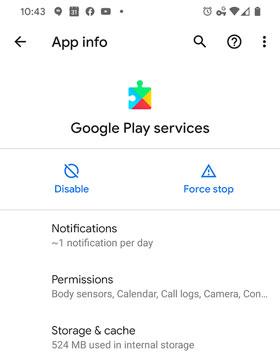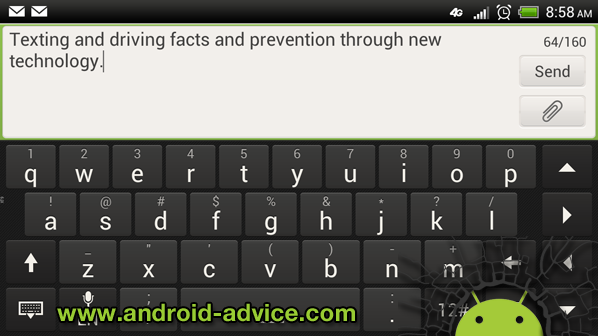No matter what anyone says, we all text and drive at least occasionally. When I grab my phone and send or receive a text I really don’t think too much about the effects that it has on my driving and still like to think it doesn’t. This being said there are many statistics to show that it is dangerous and even more with teens who already drive much more aggressively than most adults.
Facts about Texting and Driving:
Almost 1 out of 4 auto accidents occurred because of cell phone use. This equates to around 1.3 million car crashes in just one year because of a cell phone. Texting while driving delays a drivers reaction time as much as having a blood alcohol level at the legal limit. When you take the time to text while your driving down the road it takes roughly 5 seconds to send a text. While this doesn’t sound like a lot of time, at 55mph you travel close to 100yds (the length of a football field) without looking up at the road. To give a better idea of the dangers of texting and driving check these stats out (increase risk of accident):
- 2.8x more risk – Calling a friend by Dialing their number
- 1.3x more risk – Talking while driving
- 1.4x more risk – Reaching for your phone
- 23x more risk – Texting and driving
With at least 82% of Americans age 16-17 owning cell phones 34% have admitted to texting and driving. We all know that even at the 34% that have admitted this there are many more that aren’t willing to spill. Those teens that text and drive spend almost 10% of the time outside of their driving lane. Also take note that 18% of fatalities from distraction related accidents are caused by cell phones one way or another.
There are many ways that we try to justify texting and driving or at least find ways we think make it safer. One thing we all assume is that reading a text message and not sending one is much safer. Others are holding the phone near the windshield, or increasing following distance, and only texting when at a red light or stop sign. Are these really ways to increase your safety and decrease your risk of an accident? I don’t judge because I text and drive but wont say its safe by any means.
Preventative measures in place to fight Texting and Driving:
Within the U.S. there are 10 states that prohibit all drivers from using mobile devices while driving and a total of 32 that prohibit new drivers from using their mobile devices while driving. Overall there are 39 states that have banned specifically texting and driving completely with general cell phone use still allowed.
How can you prevent Texting and Driving:
Its quite simple, just don’t do it. If you do have the temptation to text when driving, put your phone somewhere you cannot get to it when you get in the car. At a very minimum ask a passenger to read the text to you assuming someone is in the car with you. Download an App to your device to help with texting when in the car (apps below in technologies).
Technologies available to parents to help with Texting and Driving:
- DriveCam – a device that allows a parent to monitor a drivers activity and provides real time feedback via video.
- AT&T Drive Mode – This is a free anti-texting and driving mobile app for Android and Blackberry devices from AT&T.
- Text-Free Driving Pledge – This is a much less likely solution since teens aren’t the most reliable of sorts but is available just the same. Teens and parents can take the text-free-driving pledge at textinganddrivingsafety.com
There are also many social avenues that to help with anti-texting and driving awareness such as Twitter accounts: @RayLaHood, @DistractionGov, @NHTSgov, and @DriveSafely. Some great blogs for this are FromReids.org, RookieDriver.wordpress.com, ctdrive.blogspot.com, EndDD.org.
Mobile apps available to help the Texting and Driving Problem:
There are many apps available on mobile devices to make texting easier for you or to block it completely until you get to your destination. Some of these apps are:
- iZup – sends calls directly to voicemail and waits to deliver text messages until your car stops.
- DriveSafe.ly – Reads texts out loud and allows you to respond without ever touching the phone.
- Textcution – Disables texting while your car is moving and also has a notification in place to alert parents when the app is removed.
- DriveOff – when a device is traveling at over 10mph this app will shut off and distracting apps on your device and halt incoming calls and texts.
- TextBuster – This is a more advanced app that requires a device installed in the car that will disable texting while driving but still allow phone calls and GPS.
- DriveScribe – This one will block texts when the car is in motion but also let the user know when they are driving too fast. This one does require the driver to start the app before driving.
While texting and driving is becoming more of a problem each year car companies are realizing the need for something. Many 2013 models of cars are coming out with hands free texting capabilities and many other features to create a safer driving experience. Personally I have seen people trip over curbs and walk right into people just walking and texting. While funny it goes to show if a person can’t walk and text then how likely is it they will be in a car accident when doing the same thing.
Personally I do text and drive and will continue to text and drive so i’m not criticizing those that do just making everyone aware that it is a real concern that should be addressed by parents and especially new drivers. I am NOT a huge fan of laws being created to control what we do although I do leave it up to parents to educate their children and lead by example.

























